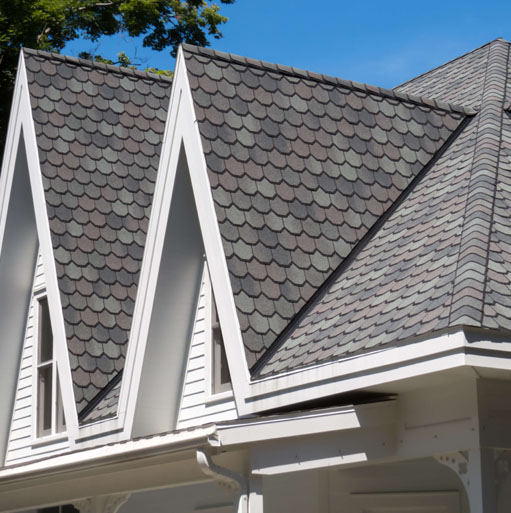Roof shingles do much of the heavy lifting for preventing leaks. However, shingles alone can’t prevent all water from seeping inside. For this reason, flashing is also used to help redirect water and/or simply provide better protection against water. If you would like to better care for your roof and reduce the risk of leaks and repairs, check out the answers to these four common questions about flashing.
What Does Flashing Do?
The main goal of maintaining your roof is preventing leaks. Thanks to shingles and the waterproof underlay beneath the shingles, your roof does an excellent job of doing just that. However, there are parts of your roof where leaks are more common. Whenever something passes through the roof, there may be small gaps where the roof and protruding structure meet. Placing flashing here creates a new battier and helps redirect the water.
Similarly, some parts of the roof promote pooling water, such as a small divot near the chimney. Without flashing to redirect the water, it may just sit on your roof. Overtime, the water wears down the shingles to create a leak.
Are There Different Types of Flashing Material?
For the most part, flashing is made from metal: aluminum, copper or steel. Aluminum is a somewhat popular choice because it is easy to form, but it isn’t as durable as copper or steel. Copper flashing lasts a long time, but it can be costly, and the color will change to patina. Steel is usually the most desirable choice for flashing because of its strength and corrosion-resistance (after galvanization).
However, some roofers use flashing made from other materials, such as rubberized asphalt, butyl rubber and PVC. However, they are not as
durable, especially against weather, so they may need a special laminated top to provide better protection.
Where Should You Find Flashing?
First, you should spot flashing anywhere that something passes through the roof: vents, chimney, skylights, etc. Similarly, when the roof meets the gutters, small gaps may allow some water to escape before it lands in the gutter, which can cause water damage to the side of your house. For this reason, kickout flashing is usually used to help water flow into gutters.
Any open valley also needs flashing for better protection and to help direct the water away from the valley, where it can easily pool and sit for a long period of time. A valley is any portion of the roof where two parts of the roof meet, forming a low point where water can easily get stuck.
Can Flashing Be Repaired?
If there is slight damage to flashing, such as a small dent, your roofer may be able to repair it. However, if the flashing has to be removed, it’s
usually better to replace it. The main reason for this is that it’s hard to get the nails back in the exact holes when the flashing is replaced. If they aren’t perfectly replaced, it may leave a small hole in the flashing for water.
Luckily, replacing your flashing isn’t as expensive as you might think (or as expensive as major roof repairs if you do get a leak). For flashing in a valley, you’ll pay about $15 to $25 per linear foot. Flashing around the chimney or a skylight, however, can cost closer to $200 to $500.
Flashing is part of your entire roof structure, and it is important to help prevent small leaks that can create big, expensive damage.
If you would like to know more about roof flashing, roof maintenance, or roofing repair/replacement contact us at Seagate Roofing and Foundations today.

